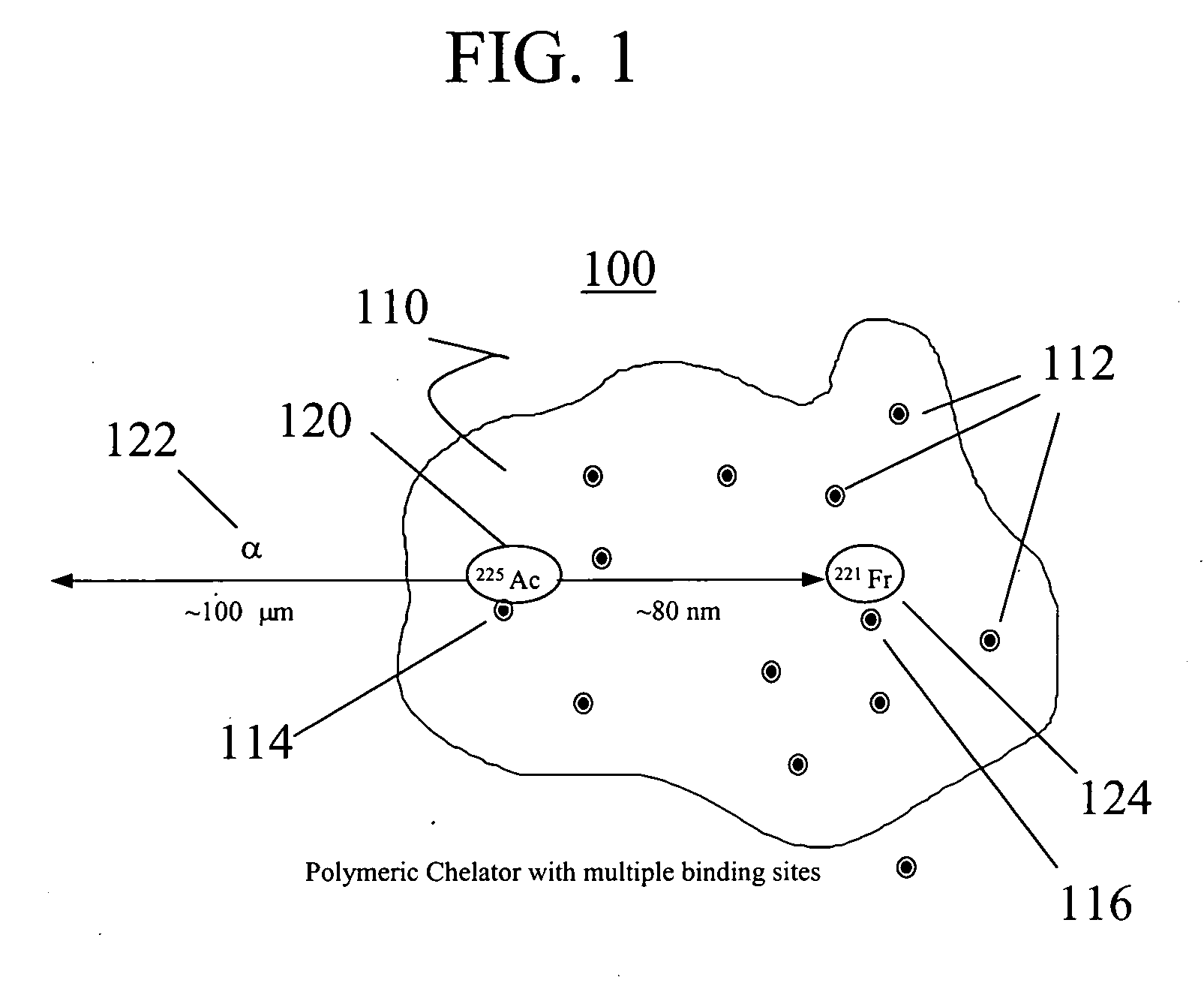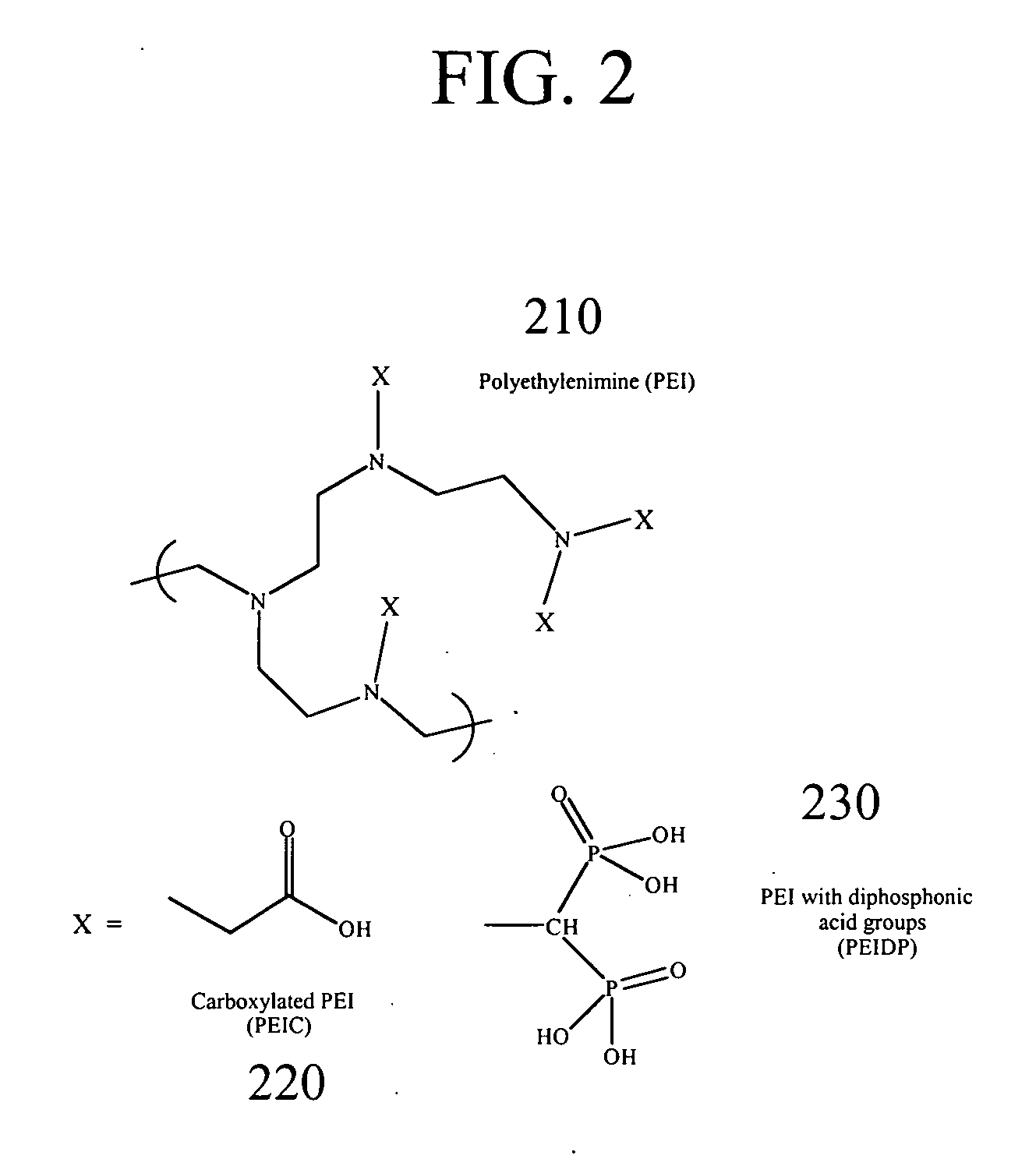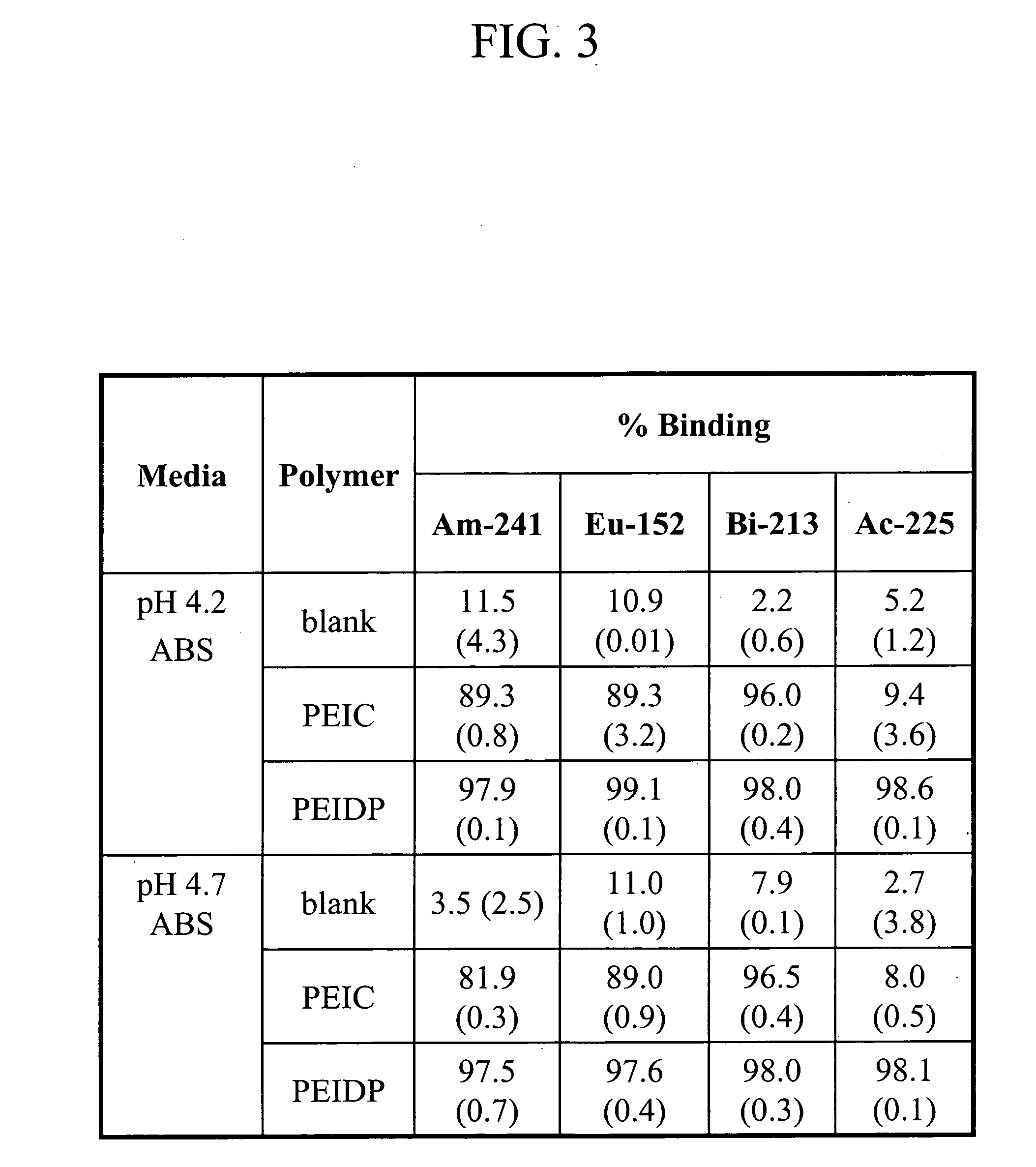Polymeric chelators for radionuclide delivery systems
a radionuclide and chelator technology, applied in the field of radionuclide delivery systems, can solve the problems of limited availability of many radionuclides suitable for therapy, low capacity of the delivery system, and significant cell damage within a very limited area, so as to reduce ancillary toxicity and increase the effective decay-particle yield
- Summary
- Abstract
- Description
- Claims
- Application Information
AI Technical Summary
Benefits of technology
Problems solved by technology
Method used
Image
Examples
example 1
Polymers
[0040] Two PEI derivatives, polyethyleneimine (PEI) derivatized with diphosphonic acids (PEIDP) and PEI derivatized with carboxylic acids (PEIC) were evaluated. Schematic representations of the structures of the cross-linked parent PEI polymer 210, carboxylated PEI 220 and PEI with phosphoric acid groups 230 are shown in FIG. 2. In the preparation of both PEIDP and PEIC, water-free PEI was prepurified to >30,000 MW using A / G Technology hollow fiber filters. PEI was then functionalized with carboxylate groups using four equivalents of bromoacetic acid to yield fully-functionalized PEIC. While no detailed structure of the polymer has been obtained, it is believed that both primary and secondary amines are modified to produce aminocarboxylate binding sites similar to those present in EDTA. For a nominal 50,000 MW polymer, functionalization would correspond to approximately 800 aminocarboxylate units per polymeric unit.
[0041] The diphosphonic acid derivative (PEIDP) was synthe...
example 2
Radionuclide Solutions and Assay
[0043] Unless otherwise noted, Am-241 (alpha-emitter, 432 year half-life) and Eu-152 (decay by electron capture (ec), 13.6 year half-life) were used as radiochemical surrogates for actinium for the initial studies, due in part to the short half-life of Ac-225. The few published binding constants for Ac (III) and its behavior on ion-exchange media indicate that actinium's chemical behavior is bracketed by the trivalent lanthanides and actinides. Since the half-life of Ac-225 (alpha-emitter, 10 day half-life) is much shorter than those of the two surrogates, the standard activity loading using the surrogates corresponds to an actinium activity loading of >500 times greater. While the studies reported here focused on actinium and its surrogates, the opportunity to examine the behavior of isolated Bi-213 was exploited as well.
[0044] Stock solutions of Am-241 and Eu-152 in 1 molar nitric acid were on the order of 107 dpm / mL. The most precise and consiste...
example 3
Binding Radionuclides to Polymers
[0047] 5 mL solutions of buffered saline containing 0.01-0.02% polymer by weight are spiked to approximately 105 dpm / mL (0.05 μCi / mL) using 20-50 μL aliquots of the radionuclide stocks. Solutions are mixed in polyethylene scintillation vials and allowed to sit for varying amounts of time, ranging from 5 minutes to several days, prior to separation. Separation of uncomplexed metals from polymer-bound metals is affected by centrifugation of aliquots to approximately 20-50% original volume through Amicon Centricon® or Amicon Ultra-4® 10 K ultrafiltration units.
PUM
| Property | Measurement | Unit |
|---|---|---|
| recoil energy | aaaaa | aaaaa |
| energy | aaaaa | aaaaa |
| recoil energy | aaaaa | aaaaa |
Abstract
Description
Claims
Application Information
 Login to View More
Login to View More - R&D
- Intellectual Property
- Life Sciences
- Materials
- Tech Scout
- Unparalleled Data Quality
- Higher Quality Content
- 60% Fewer Hallucinations
Browse by: Latest US Patents, China's latest patents, Technical Efficacy Thesaurus, Application Domain, Technology Topic, Popular Technical Reports.
© 2025 PatSnap. All rights reserved.Legal|Privacy policy|Modern Slavery Act Transparency Statement|Sitemap|About US| Contact US: help@patsnap.com



